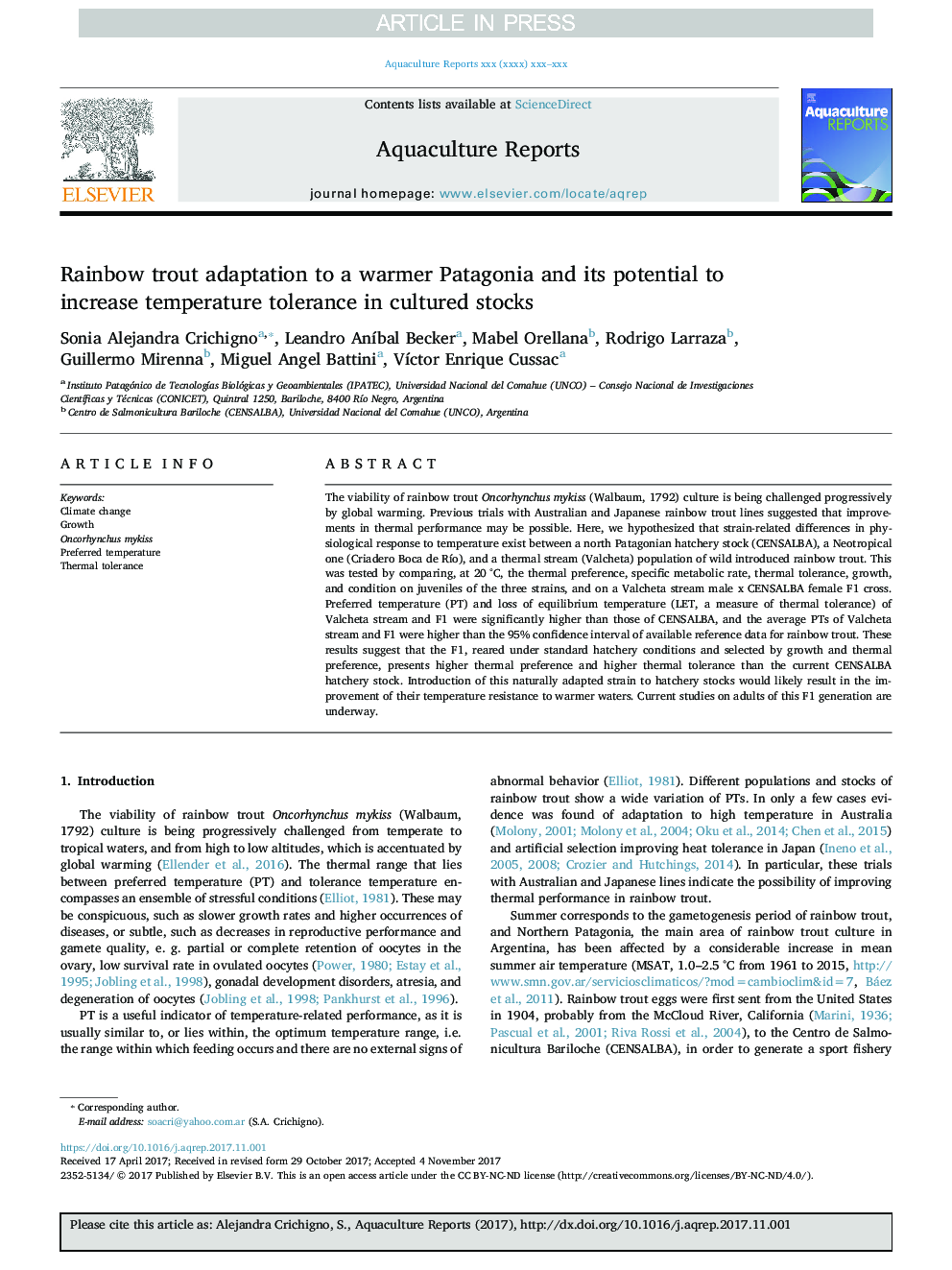| Article ID | Journal | Published Year | Pages | File Type |
|---|---|---|---|---|
| 8863348 | Aquaculture Reports | 2018 | 7 Pages |
Abstract
The viability of rainbow trout Oncorhynchus mykiss (Walbaum, 1792) culture is being challenged progressively by global warming. Previous trials with Australian and Japanese rainbow trout lines suggested that improvements in thermal performance may be possible. Here, we hypothesized that strain-related differences in physiological response to temperature exist between a north Patagonian hatchery stock (CENSALBA), a Neotropical one (Criadero Boca de RÃo), and a thermal stream (Valcheta) population of wild introduced rainbow trout. This was tested by comparing, at 20 °C, the thermal preference, specific metabolic rate, thermal tolerance, growth, and condition on juveniles of the three strains, and on a Valcheta stream male x CENSALBA female F1 cross. Preferred temperature (PT) and loss of equilibrium temperature (LET, a measure of thermal tolerance) of Valcheta stream and F1 were significantly higher than those of CENSALBA, and the average PTs of Valcheta stream and F1 were higher than the 95% confidence interval of available reference data for rainbow trout. These results suggest that the F1, reared under standard hatchery conditions and selected by growth and thermal preference, presents higher thermal preference and higher thermal tolerance than the current CENSALBA hatchery stock. Introduction of this naturally adapted strain to hatchery stocks would likely result in the improvement of their temperature resistance to warmer waters. Current studies on adults of this F1 generation are underway.
Related Topics
Life Sciences
Agricultural and Biological Sciences
Animal Science and Zoology
Authors
Sonia Alejandra Crichigno, Leandro AnÃbal Becker, Mabel Orellana, Rodrigo Larraza, Guillermo Mirenna, Miguel Angel Battini, VÃctor Enrique Cussac,
